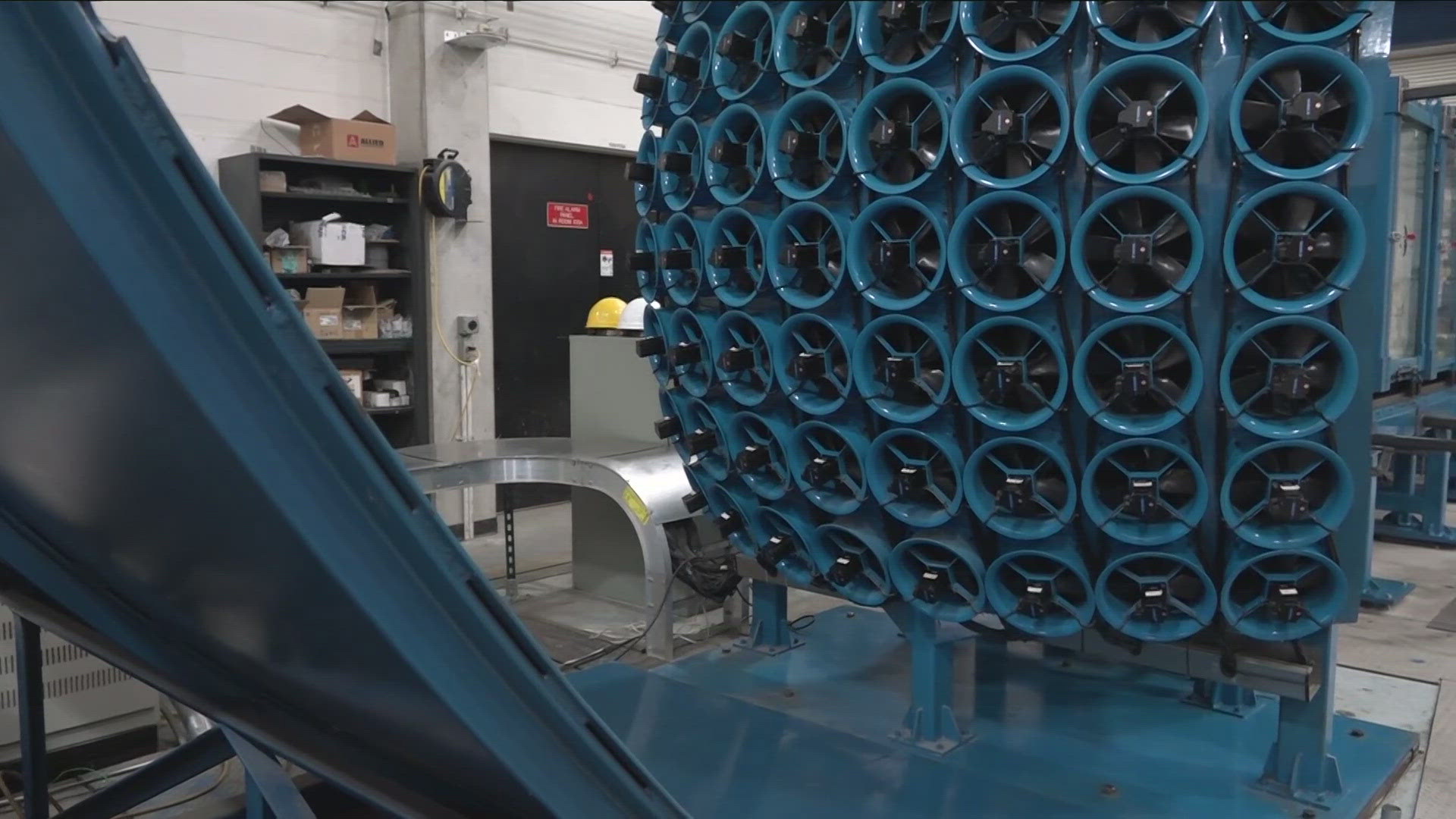AMHERST, N.Y. — We have seen how wild weather can cause major damage across our area.
The University at Buffalo will continue to study how high winds can affect buildings thanks to a new government grant from taxpayers.
2 On Your Side has a closer look at the School of Engineering Wind Tunnel program.
Vivid examples of extreme weather have whipped through Western New York and other parts of our state, country, and the world for that matter and they can take their toll on various elevated structures like office towers and bridges.
To help know how to build them to increase their structural resiliency and stability for our safety and property protection a wind tunnel device at UB's School of Engineering can simulate destructive stresses placed upon them.
Professor Andrew Whittaker, who focuses on Civil, Structural, and Environmental Engineering, explains "What we can do with this tunnel is understand the physics of how structures interact with extreme winds. If we can understand it they we can model it at a scale much bigger than this."
They want to add more measurement instrumentation now with an additional $475,000 in federal funding through the National Windstorm Impact Reduction Program connected to FEMA and NOAA.
And they hope to take it a step further under the guidance of civil and wind engineering professor Teng Wu.
Whittaker says "We aim to have what he is calling the first AI-empowered wind tunnel on the planet. And that's to take advantage of what we call machine learning or deep learning."
U.S. Representative Tim Kennedy noted, "When you have people comparing the University of Buffalo's School of Engineering with the likes of Harvard, Yale, and MIT - they're doing a tremendous job here so we have to support that."
The UB wind tunnel program began about five years ago as it built on other better-known specialty areas of research at UB like its earthquake engineering research program.
Whittaker says "The earthquake hazard is important and we still maintain a strength in the area. But we've added capacity in wind engineering, fire engineering and we're more of a multi-hazard department now than we were 20 years ago."
And that could all lead to real-world solutions as we see with the seismic and wind energy control equipment produced by Taylor Devices to safeguard structures all over the world.
Some UB grads have gone to work for the firm based in North Tonawanda.

